
Andrew Carnegie, who became a dollar millionaire while still quite young, was born of poor parents in Dunfermline, Scotland, in 1835. His father was a weaver operating a hand loom and his mother added to the meagre family fortunes by making shoes. Young Andrew was bright even as a child and stood out at school as having a better grasp of detail and a greater understanding than the average pupil. But his difficulties as a child influenced his later life, making him aware of the needs of others.
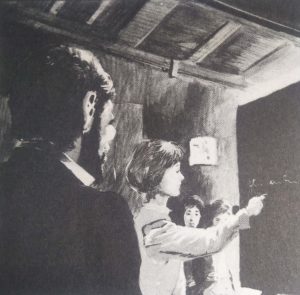
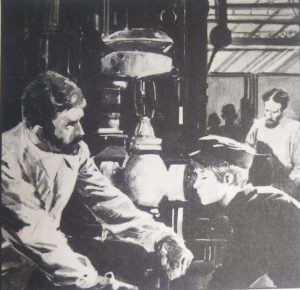
In 1848, his father, fearing unemployment due to the growing numbers of power looms being installed in factories, decided to emigrate to America. So the whole family set sail and eventually arrived in Allegheny City, Pennsylvania (now a part of Pittsburg). There, Andrew started work as a bobbin-boy in a cotton factory, later moving to work as a telegraph operator and a messenger boy. When he was twenty, his father died and he was left with the responsibility of looking after his mother and brother.
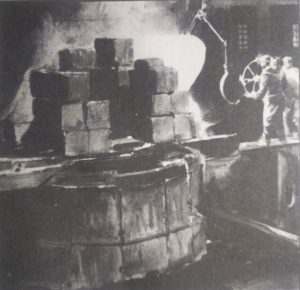
But keen business sense saw him through. He invented the railway sleeping car, then bought a farm which provided enormous amounts of oil. He began the Keystone Bridge Company and acquired a large steel plant, building bridges of steel. He controlled a railway 684 kilometres long and ran a line of lake steamships. Money produced more money — and eventually he became very rich indeed. But already he wanted to use his wealth for the good of others, so he decided to return to Scotland.

From Scotland, Carnegie did indeed work to help others. The Carnegie Foundation still awards prizes for people who have benefited mankind. The Hero Funds of America and the United Kingdom recognise deeds of heroism. In fact, Carnegie’s idea of the duties of the man of wealth is demonstrated in his own words. “To provide moderately for the wants of those dependent upon him; and after doing so, to consider all surplus revenues which come to him simply as trust funds…”
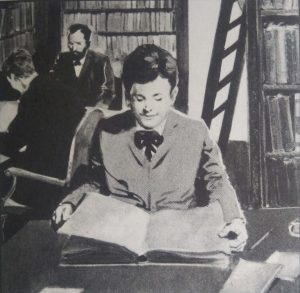
He was 66 when he set up a number of such trusts. In America, the Carnegie Trust helped the education of the Negroes and also provided pensions for all Carnegie’s workers. In Scotland, he created a special Dunfermline Trust for his home town, and the United Kingdom Trust helped and founded welfare centres, libraries and museums. Two scientific institutes were established in Washington and Pittsburg, the latter today considered to be one of the most important in the world.
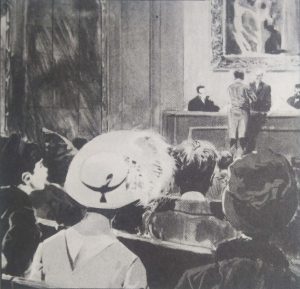
The cause of peace was dear to Andrew Carnegie’s heart, so he built the Palace of Peace at The Hague in Holland. He also had a great deal to do with the building of the Music Hall in New York. This was renamed Carnegie Hall in 1898. When he died at Lennox, Massachusetts in 1919, it was estimated that his gifts during his lifetime amounted to around £70,000,000. His work is a memorial to a man who maintained that someone who dies with money he is free to distribute dies disgraced.
He remembered the Heroes
The Carnegie Trusts are still very much living organisations. Many operate in the United States of America, and others are in Britain, France, Norway, Switzerland, the Netherlands, Sweden, Denmark, Belgium and Italy.
One of the most interesting is the Carnegie Hero Fund Trust of Great Britain, established in 1908 and setup to recognize outstanding feats of heroism.
The Trustees themselves decide if a person’s act is worthy of recognition. It must involve the saving of life or the attempted saving of life and the risk of loss of life to the rescuer. The person must not be related to the man, woman or child involved, unless severe handicap is suffered or actual loss of life.
When an act has been accepted by the Trustees, the name of the hero or heroine is inscribed on the Roll of Honour and sometimes a Bronze. Medallion is awarded. Varying amounts of financial assistance are given to people or the families of people who have acted heroically.
Here are some heroic deeds.
One was a 42-year old man who lost his life in 1977 while trying to rescue his two grandchildren. The house the children were in caught fire and no one could reach them. The man eventually managed to pet into the house but was unable to save the children. All three were dead. The man’s family receive a regular weekly allowance for his heroism.
Another was a 64-year old man who died from injuries he received in 1978 while trying to save a fellow workman from being drawn into a machine. He saved the man’s life but was so badly injured himself that he died. Again, his family receive a regular allowance.
The Bronze Medallion and an award which brought electricity to the island was made to the people of Fair Isle in 1956 because of the heroism of 12 islanders who rescued a man badly injured while climbing there.
These are only a few of those who have benefited but as many as 170 families at one time have received, awards from the Trust.
Andrew Carnegie would have been proud of them so are we!
Andrew Carnegie
Andrew Carnegie, born on November 25, 1835, in Dunfermline, Scotland, was a prominent American industrialist and philanthropist who became one of the wealthiest men in history. His rags-to-riches story is a remarkable testament to his incredible business acumen and relentless ambition.
Carnegie’s family immigrated to the United States when he was just a child, settling in Allegheny, Pennsylvania. Despite their financial struggles, young Andrew showed early signs of his entrepreneurial spirit. At the age of 13, he got his first job as a bobbin boy in a cotton factory. This experience introduced him to the world of manual labor and laid the foundation for his future manufacturing ventures.
As a young adult, Carnegie began working as a telegraph messenger boy, where he quickly developed his skills and knowledge in the technology and communication industry. He then moved up the ranks and became a secretary and telegraph operator for the Pennsylvania Railroad Company, a position that allowed him to witness firsthand the rising influence of the railroads in American society.
Recognizing the immense potential for growth in the steel industry, Carnegie invested his savings and began his own ventures. In 1870, he founded the Keystone Bridge Company, which started to gain significant success due to the growing demand for steel bridges and infrastructure. This success led Carnegie to establish the Carnegie Steel Company in 1873, cementing his place in the industry and signaling the beginning of his meteoric rise to wealth.
Carnegie revolutionized the steel manufacturing process, implementing innovative techniques and technologies that significantly increased productivity and reduced costs. His company became the largest and most efficient producer of steel in the United States, with a monopoly over several critical aspects of the industry. His success made him a millionaire many times over.
By the late 1880s, Carnegie began expanding his business empire through vertical integration. He acquired various steel-related businesses, including mines, railroads, and iron ore fields, thus exerting complete control over the production and distribution of steel. This consolidation of power not only bolstered his personal wealth but also solidified his influence and dominance in the industry.
In 1901, Carnegie decided to sell his company to financier J.P. Morgan, creating the U.S. Steel Corporation, the first billion-dollar corporation in the world. This transaction made Carnegie one of the richest men in the world at the time, as he profited a staggering $225 million from the sale. With this massive fortune, he cemented his place in history as a bona fide dollar millionaire.
However, Carnegie’s wealth was not solely focused on business. He believed in giving back to society and became one of history’s greatest philanthropists. Inspired by the philosophy that “the man who dies rich dies disgraced,” he devoted much of his later life to promoting education, scientific research, and the arts. He funded the establishment of over 3,000 libraries worldwide, making knowledge accessible to countless individuals.
Andrew Carnegie’s remarkable journey from humble beginnings to becoming a dollar millionaire is a testament to his relentless drive, intelligence, and business acumen. His contributions to the steel industry and his philanthropic endeavors have left an indelible legacy that continues to shape the world today.
Andrew Carnegie was a prominent industrialist and philanthropist during the late 19th and early 20th centuries. He used his wealth and influence to shape industries and engage in several philanthropic endeavors. Here are some ways in which Carnegie utilized his resources to make a lasting impact:
Steel Industry
Copied
Steel Industry
Carnegie was heavily involved in the steel industry and played a vital role in its expansion. Through his company, Carnegie Steel Corporation, he pioneered the use of the Bessemer process, which made steel production more efficient and affordable. Carnegie's innovations helped establish the United States as a leading steel producer globally.
Carnegie was heavily involved in the steel industry and played a vital role in its expansion. Through his company, Carnegie Steel Corporation, he pioneered the use of the Bessemer process, which made steel production more efficient and affordable. Carnegie's innovations helped establish the United States as a leading steel producer globally.
Carnegie was heavily involved in the steel industry and played a vital role in its expansion. Through his company, Carnegie Steel Corporation, he pioneered the use of the Bessemer process, which made steel production more efficient and affordable. Carnegie’s innovations helped establish the United States as a leading steel producer globally.
Vertical Integration
Copied
Vertical Integration
Carnegie implemented vertical integration in his steel business. He acquired companies involved in all stages of steel production, from mining iron ore and coal to transporting finished steel products. This strategy allowed him to control costs, enhance efficiency, and dominate the industry.
Carnegie implemented vertical integration in his steel business. He acquired companies involved in all stages of steel production, from mining iron ore and coal to transporting finished steel products. This strategy allowed him to control costs, enhance efficiency, and dominate the industry.
Carnegie implemented vertical integration in his steel business. He acquired companies involved in all stages of steel production, from mining iron ore and coal to transporting finished steel products. This strategy allowed him to control costs, enhance efficiency, and dominate the industry.
Philanthropy
Copied
Philanthropy
After selling his steel company to J.P. Morgan in 1901, Carnegie became one of the most significant philanthropists of his time. His focus was primarily on educational and cultural institutions. Carnegie established thousands of libraries, including the building of 2,509 libraries in the United States and abroad. He believed that education was critical for societal progress and made efforts to make knowledge accessible to all.
After selling his steel company to J.P. Morgan in 1901, Carnegie became one of the most significant philanthropists of his time. His focus was primarily on educational and cultural institutions. Carnegie established thousands of libraries, including the building of 2,509 libraries in the United States and abroad. He believed that education was critical for societal progress and made efforts to make knowledge accessible to all.
After selling his steel company to J.P. Morgan in 1901, Carnegie became one of the most significant philanthropists of his time. His focus was primarily on educational and cultural institutions. Carnegie established thousands of libraries, including the building of 2,509 libraries in the United States and abroad. He believed that education was critical for societal progress and made efforts to make knowledge accessible to all.
Carnegie Endowment for International Peace
Copied
Carnegie Endowment for International Peace
In 1910, Carnegie founded the Carnegie Endowment for International Peace, an organization aimed at promoting diplomacy and preventing conflict. The Carnegie Endowment conducts research, publishes reports, and organizes forums to foster understanding and peaceful resolution of international disputes.
In 1910, Carnegie founded the Carnegie Endowment for International Peace, an organization aimed at promoting diplomacy and preventing conflict. The Carnegie Endowment conducts research, publishes reports, and organizes forums to foster understanding and peaceful resolution of international disputes.
In 1910, Carnegie founded the Carnegie Endowment for International Peace, an organization aimed at promoting diplomacy and preventing conflict. The Carnegie Endowment conducts research, publishes reports, and organizes forums to foster understanding and peaceful resolution of international disputes.
Carnegie Mellon University
Copied
Carnegie Mellon University
Carnegie also contributed to the establishment of several educational institutions. In 1900, he donated funds to merge the Carnegie Technical Schools with the Mellon Institute of Industrial Research to create what is now known as Carnegie Mellon University. The university focused on science and technology education to meet the demands of the rapidly industrializing world.
Carnegie also contributed to the establishment of several educational institutions. In 1900, he donated funds to merge the Carnegie Technical Schools with the Mellon Institute of Industrial Research to create what is now known as Carnegie Mellon University. The university focused on science and technology education to meet the demands of the rapidly industrializing world.
Carnegie also contributed to the establishment of several educational institutions. In 1900, he donated funds to merge the Carnegie Technical Schools with the Mellon Institute of Industrial Research to create what is now known as Carnegie Mellon University. The university focused on science and technology education to meet the demands of the rapidly industrializing world.
Pension Fund Initiatives
Copied
Pension Fund Initiatives
Carnegie introduced pension funds for his workers, an innovative concept at that time. He believed that providing retirement plans would improve employee loyalty and reduce the likelihood of strikes or labor unrest. His pension program set a precedent for employee benefits in the industrial sector.
Carnegie introduced pension funds for his workers, an innovative concept at that time. He believed that providing retirement plans would improve employee loyalty and reduce the likelihood of strikes or labor unrest. His pension program set a precedent for employee benefits in the industrial sector.
Carnegie introduced pension funds for his workers, an innovative concept at that time. He believed that providing retirement plans would improve employee loyalty and reduce the likelihood of strikes or labor unrest. His pension program set a precedent for employee benefits in the industrial sector.
Overall, Andrew Carnegie utilized his immense wealth and influence to shape the steel industry and establish himself as a prominent figure. However, it is his philanthropic endeavors that truly cement his legacy. Through his generous donations to educational and cultural institutions, he made a profound impact in promoting education, intellectual growth, and international peace.
Andrew Carnegie, the industrialist and philanthropist, undertook several philanthropic activities and initiatives with his wealth. Some of the notable ones include:
-
Carnegie Libraries
Carnegie funded the construction of more than 2,500 public libraries worldwide. He believed that access to books and knowledge was crucial for societal advancement. These libraries were intended to provide free education and promote cultural development.
-
Carnegie Hall
Carnegie funded the construction of Carnegie Hall in New York City, which opened in 1891. The venue was intended to be a center for music, offering affordable tickets to various performances and ensuring that music was accessible to all.
-
Carnegie Endowment for International Peace
Carnegie established this organization in 1910 as a way to promote peace and resolve international conflicts. It focuses on research and policy development to prevent conflicts and promote international cooperation.
-
Carnegie Technical Schools
Carnegie founded several technical schools, including the Carnegie Institute of Technology (now Carnegie Mellon University) in Pittsburgh, to provide practical education and training for industrial and technological careers.
-
Pension Fund for Teachers
Carnegie established a pension fund for college professors, which later expanded to include teachers in elementary and secondary schools. This initiative aimed to provide financial security for educators during their retirement years.
-
Carnegie Hero Fund
Carnegie set up this fund to honor individuals who displayed courage in saving the lives of others. The Hero Fund provides financial assistance to the heroes or their families and continues to operate to this day.
These philanthropic activities and initiatives by Andrew Carnegie reflect his belief in the importance of education, culture, and peace for the progress of society. They have left a lasting impact and continue to benefit communities worldwide.
Frequently Asked Questions about Andrew Carnegie, the Dollar Millionaire :
Andrew Carnegie was a Scottish-American businessman and philanthropist who lived from 1835 to 1919. He rose from humble beginnings to become one of the wealthiest individuals in the world during the late 19th century. Carnegie’s success primarily stemmed from his ventures in the steel industry, where he pioneered the development of large-scale steel manufacturing processes.
Andrew Carnegie’s wealth was primarily accumulated through his involvement in the steel industry. In the late 19th century, he founded the Carnegie Steel Company, which eventually grew to become the largest steel manufacturer in the United States. Carnegie embraced technological advancements and pioneered the use of the Bessemer process, a technique that revolutionized steel production by making it faster and more cost-effective.
Andrew Carnegie’s fortune began to skyrocket in the 1870s when his investments in the steel industry began to pay off significantly. By the 1880s, he had become one of the wealthiest individuals in the United States and eventually achieved the status of being a dollar millionaire.
At the peak of his wealth, Andrew Carnegie was estimated to be worth around $298 billion in today’s dollars. This staggering amount made him one of the richest individuals in history.
After achieving great success in the steel industry, Carnegie diversified his investments. He expanded his wealth through investments in railroad companies, oil, and real estate. Carnegie was also involved in various philanthropic ventures, dedicating a significant portion of his wealth to education, libraries, and other causes he deemed important.
Andrew Carnegie believed in the concept of “The Gospel of Wealth,” which posited that the wealthy have a moral obligation to use their wealth for the greater good of society. He advocated for the redistribution of wealth through philanthropy, and throughout his life, he made numerous donations to establish libraries, universities, and other institutions that promoted education and public welfare.
While Andrew Carnegie is lauded for his philanthropy, his wealth accumulation did not come without controversy. The working conditions in his steel mills were often harsh, and disputes with trade unions occasionally turned violent. Carnegie’s reputation was tarnished by the Homestead Strike of 1892 when his company’s actions against striking workers led to fatalities. Critics argue that his vast wealth was built upon the exploitation of workers.
Andrew Carnegie’s legacy is twofold. On one hand, he is remembered as an immensely successful business tycoon who revolutionized the steel industry and accumulated a vast fortune. On the other hand, his philanthropic endeavors and advocacy for social causes have left an indelible mark on society. His donations established over 2,800 libraries worldwide and significantly contributed to the advancement of education and culture. Carnegie’s legacy is thus one of both immense wealth and philanthropic commitment.





























